Manual vise: pros, cons and varieties

Hand vices are a common tool and are widely used in various spheres of production and everyday life. Due to its miniature size and ease of use, this device is popular not only among professionals, but also among home craftsmen.



Description
The hand vise is pliers tool that does not require attachment to the surface and has a quick fixation. The main function of the hand vise is a reliable fixation of finished parts or workpieces for their machining.
The design of the tool is very simple and looks like pliers. The parts are fixed between two jaws, which are clamped using a wing nut. During operation, the vice is held with one hand, while the other hand is processing the part.
The scope of the manual vise is quite wide.
- They are actively used when performing small welding works. in automotive service and industrial production.
- In addition to welding, the vice is used instead of wrenches and adjustable wrenches if necessary, unscrew the threaded connection, and also carry out with their help loosening nuts and bolts with knocked down edges.
Hand-held vices are often used by aircraft modelers, jewelers and engravers, as well as plumbing craftsmen who use them to clamp the tap when cutting internal threads.


Advantages and disadvantages
The popularity of hand vices not only in production, but also in everyday life is due to a number of indisputable advantages of this simple tool..
- Manual yews are characterized by the absence of backlash, which increases the accuracy of processing parts.
- Due to its small size and light weight, the hand vise does not require a working space and easily fits in a pocket of trousers or a work apron. They do not need to be attached to a workbench and can be carried with you at all times.
- Despite its small size, the mini-vice is highly durable and is a full-fledged locksmith tool. For their manufacture, carbon steel is used - a metal with high strength and wear resistance and a long service life.
- The handles of modern models are covered with santoprene - a material that provides good grip between the palm and the tool and does not allow the vice to slip out of the hand. In addition, in contrast to the metal surface, the santoprene handles are warm, which makes it possible to work in the cold.
- With the help of a hand vise, a wide range of works with small parts is carried out, which is why they can be safely attributed to a universal tool.
- Compared to stationary samples, manual vices are not expensive, which makes them even more popular, especially among home craftsmen. Moreover, manual models are the only type of vice that is suitable for correct work with metal tiles and aluminum profiles.

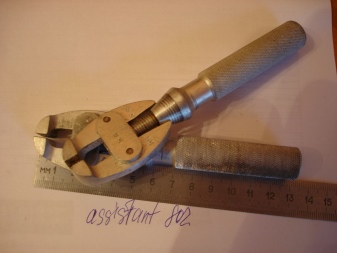
Along with the obvious advantages, manual vices still have disadvantages. These include the inability to work with large and medium parts, as well as the presence of special teeth on the jaws of some models, which can damage parts made of soft material.
Another significant drawback of manual vices is the impossibility of working at an angle, which is sometimes extremely necessary when processing curved elements.


How are they arranged?
The simplest hand vice consists of two levers with jaws at the ends, and locking mechanismconsisting of a lead screw passing through the structure and a wing nut. The workpiece is placed between the jaws and the lamb is twisted clockwise. As a result, the jaws close and the part is securely fixed between them.

Species overview
To date, all hand vices manufactured in the territory of the Russian Federation are produced in accordance with GOST 28241-89. The instrument is classified according to two criteria: design and tool fixation system.
As for the design of the models, then the standard assumes the presence of three types of devices: articulated, spring and tapered models. So, hinged samples consist of two spring-loaded hinged cheeks and a transverse clamp, despite the fact that in spring models, the hinge is replaced by a spring. In a conical vise, the ends of the jaws are driven by a rotating cone.
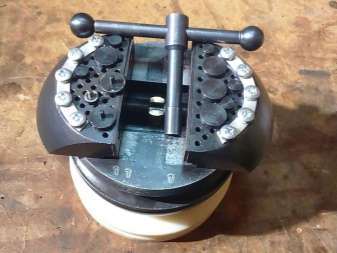

Stand apart jewelry hand vise with a transverse or end clamp, which can be made not only of metal, but also of wood and even nylon. The latter have a special wedge and outwardly resemble linen clamps.
If a more rigid fastening of jewelry is required, for example, during engraving, a ball vise with holes on the upper surface of the jaws is used, designed to install pins that provide fixation of workpieces of complex shapes.


Another criterion for the classification of hand vices is fixation system. On this basis, there are two variants of models: lever and with jaws.


With levers
Such models are very They are similar to snap pliers and consist of two jaws and two levers. Lever samples are very convenient to use and are highly popular with DIYers.
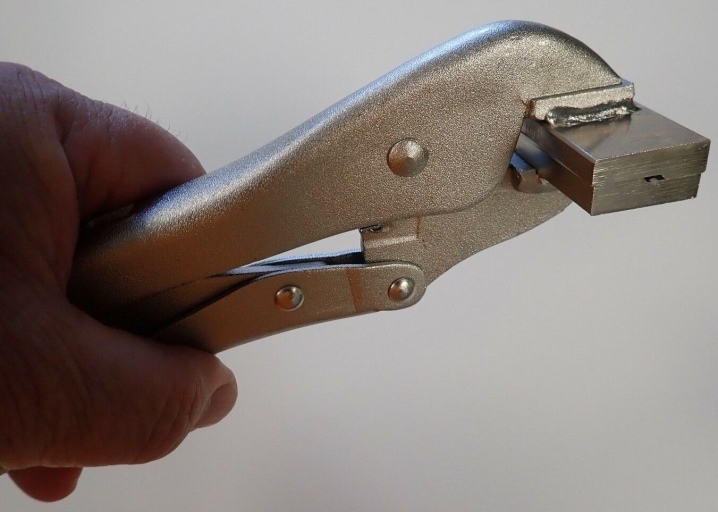
With sponges
Such models consist of steel jaws, a handle and a bridge with a screw. The fixation of the part is carried out by rotating the handle, while the cone on the back side enters between the shanks of the lips and causes them to be compressed.

Separately, mention should be made of manual vise-pliers and vise-clamps... Compared to classic vices, they have a more complex design and higher cost. So, if the usual manual vise can be purchased for 300-500 rubles, then the vise-pincers and vice-clamps will cost from 800 to 3000 rubles and more. Such models are distinguished by good fixation and wider possibilities.
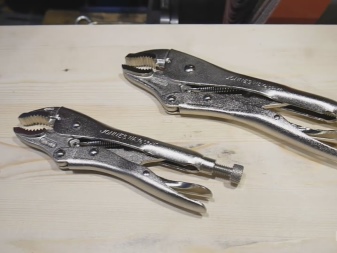

Precautions for use
Despite its diminutive size, if handled carelessly, the hand vise can cause injury to your hands. Therefore, before you start using the tool, it is advisable to familiarize yourself with the safety rules.
- So, most hand specimens are not intended for clamping incandescent parts... This is due to the fact that the hot metal changes the physical parameters of the jaws, due to which the fixation can weaken and the workpiece will fly out of the vise. This must be taken into account and, if it is necessary to work with red-hot workpieces, purchase models made of an alloy with special additives that increase the heat resistance of the material.
- Besides, you need to coordinate your movements and try not to pinch the skin of your hands when installing miniature parts in the working gap. Tweezers are recommended for placing particularly small items (eg jewelry).
- When fixing workpieces made of soft and brittle materials do not pinch the lips, as this can lead to breakage of the part and the formation of fragments.
- Do not use the vice as an adjustable wrench on live electrical equipment.... This requirement is due to the absence of an insulating braid on the handle of most models, which, when working with metal parts of electrical installations, can lead to electric shock.For such purposes, special pliers with a dielectric handle should be used.

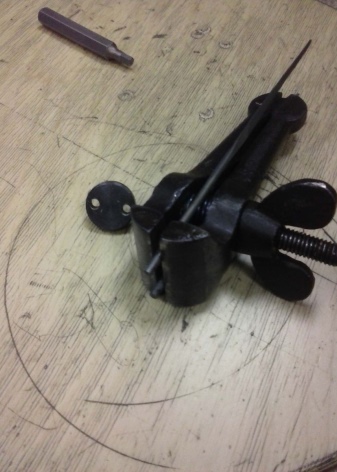
Criterias of choice
When choosing a manual vise, there are a number of important points to consider.
- First of all, you need to decide on the dimensions, which are selected based on what parts are planned to be processed. The most versatile are models with a jaw width of 50-60 mm. They are perfect for fixing not only small but also medium-sized workpieces, which greatly expands the scope of their application.
- You should also pay attention to the presence of backlash. And although it is practically absent in a hand grip, it is still necessary to check the tool for possible defects.
- It is also necessary to look at the working gap, the choice of which depends on the specifics of the work to be done and the size of the workpieces being processed.
- You should also pay attention to the inner surface of the sponges, and if you plan to work with workpieces made of low-hardness metal, it is better to purchase a model with a small height of the teeth, since more embossed sponges will leave a mark on soft parts.
- It is important to look at the manufacturer of the instrument and not buy too cheap models from dubious firms. So, saving a couple of hundred rubles in the future can result in damage to parts, quick breakage of the vice itself and injury to the hands. Among the most popular models are the products of the Taiwanese company Jonnesway and the German brand Stayer, whose production facilities are located in China.
- Another important selection criterion is the heat resistance of the tool. So, if a vice is supposed to be used to fix hot workpieces, then the best option would be to purchase models made of high-alloy steel with the addition of vanadium, chromium and molybdenum.
- If a vice is chosen for a jewelry workshop, then it would be right to purchase several tools at once, with the help of which it will be possible not only to clamp blanks made of precious metals, but also to engage in grinding and cutting of precious stones.
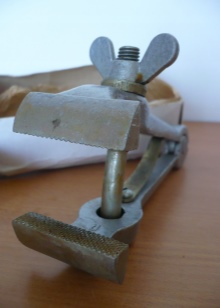















The comment was sent successfully.